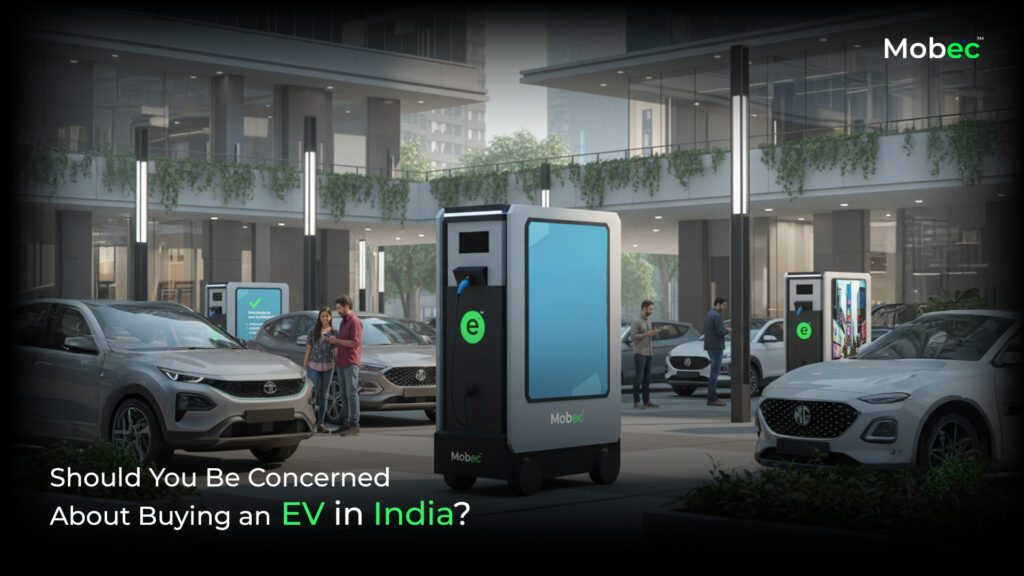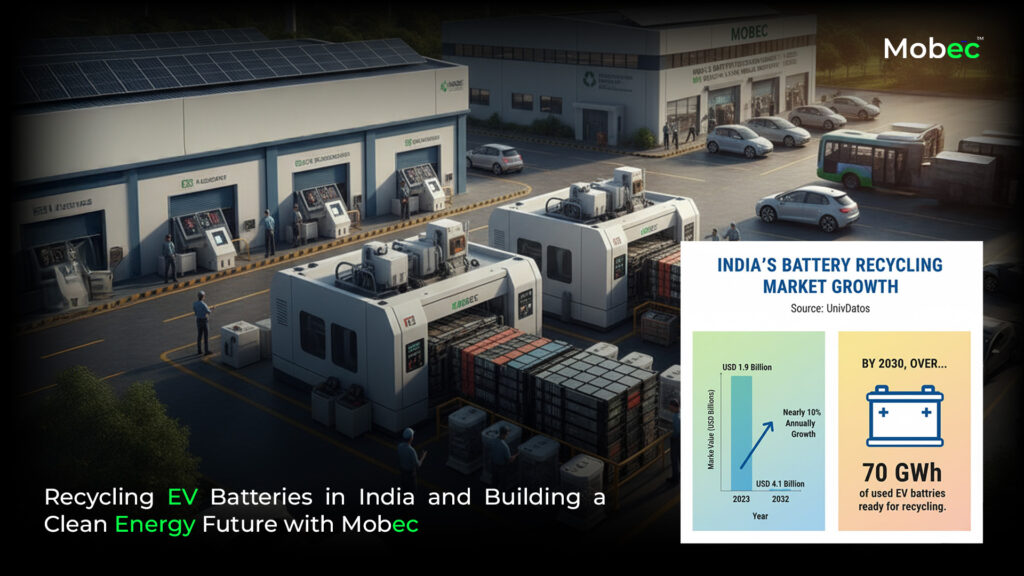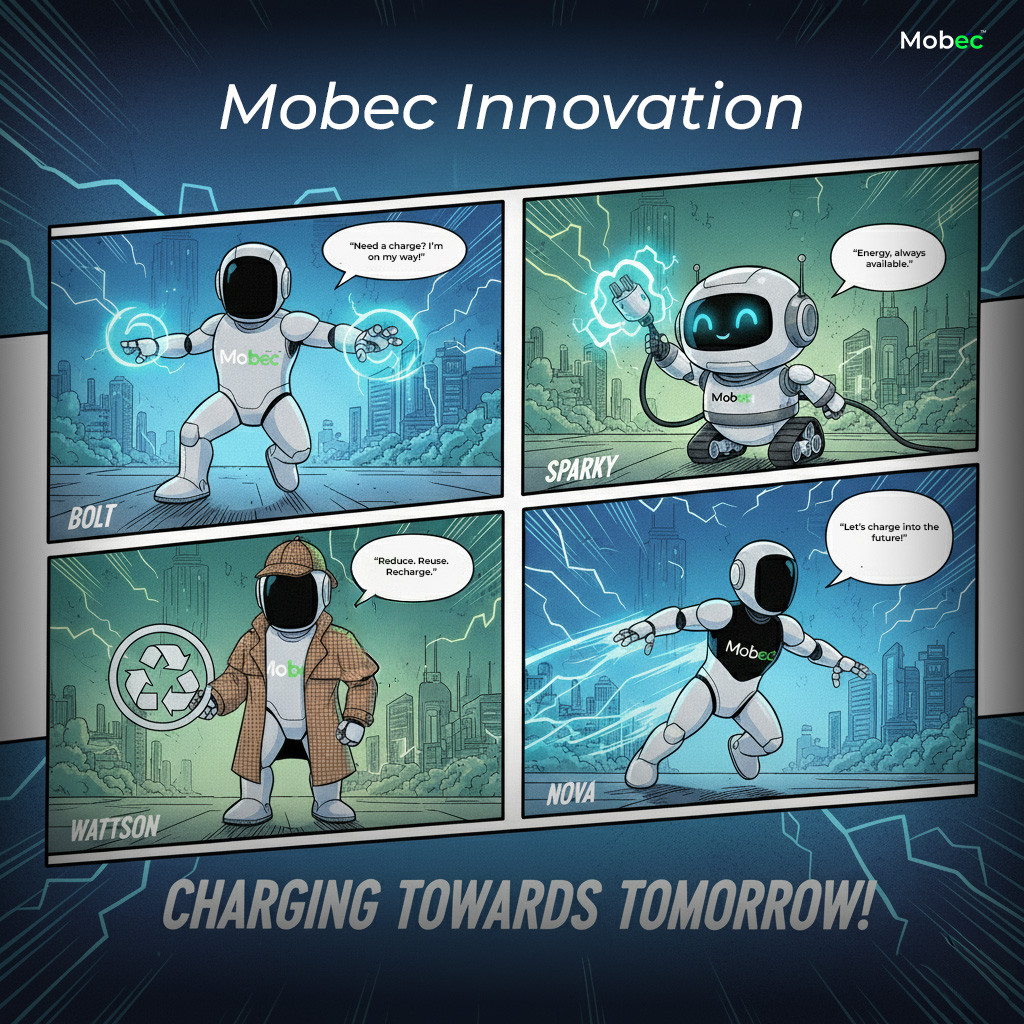Electric vehicles (EVs) are driving the future of transportation, but one question still lingers in the minds of many potential buyers—what happens when an EV battery fails?
Until recently, the common belief was that once an EV battery lost its efficiency, it had to be fully replaced—an expensive and wasteful process. But a new study is turning this idea upside down. Researchers found that most EV batteries can be restored to over 90% health simply by replacing an average of just 1.1 modules.
To put it simply, an EV battery is made up of several smaller units called “modules.” If one module goes bad, it doesn’t mean the whole battery is useless—just like replacing one bad tire doesn’t mean you need a whole new car. The “1.1 modules” figure means that in most cases, only one (and sometimes two) modules need to be swapped to make the battery feel almost new again.
This discovery has opened the doors to smarter, more sustainable EV battery management—and leading the charge is Mobec, a pioneer in EV battery recycling, battery restoration, and sustainability solutions.
EV Battery Problems Are Not the End—Just the Beginning

We’ve always assumed that a degraded EV battery signals the end of its life. However, new research shows that battery packs that fail can often be fixed with minor repairs, restoring their capacity and extending their life by several years.
Instead of discarding an entire battery, technicians can now identify and replace only the faulty modules, saving both money and materials. That’s a huge win for EV owners, car manufacturers, and the environment.
Mobec: Leading the Battery Recycling Revolution
Mobec is at the forefront of this new wave of battery sustainability and eco-friendly technology. The company is redefining what it means to recycle and restore EV batteries by combining advanced diagnostics, cutting-edge recycling methods, and a deep focus on environmental impact.
Here’s how Mobec is making a difference:
1. High Recovery of Precious Materials

Mobec’s battery recycling process ensures exceptional recovery rates of critical elements from old EV batteries:
- 99% Cobalt Recovery
- 99% Lithium Recovery
- 98% Nickel Recovery
- 80% Graphite Recovery
- 99% Manganese Recovery
These high recovery rates reduce the need for mining new raw materials, which is damaging to ecosystems and resource-intensive. Instead, Mobec gives these materials a second life, making the battery industry far more sustainable and circular.
2. Battery Repurposing for Second-Life Applications

Not all EV batteries go back into vehicles. Mobec gives partially degraded batteries new life in energy storage systems. These second-life batteries are used to store solar energy, provide backup power, and even support smart grid infrastructure.
It’s another way Mobec is helping reduce electronic waste and maximize the utility of every battery it touches.
3. Advanced Diagnostics and Modular Repairs

Mobec’s in-house technology allows technicians to diagnose battery problems at the module level. This means instead of replacing the entire battery pack, Mobec replaces only what’s needed—saving valuable materials and costs.
This approach ensures:
- Longer battery lifespan
- Faster turnaround for repairs
- Lower carbon footprint
It’s a more eco-conscious and cost-effective solution for both individuals and fleet operators.
4. Battery Repurposing for Second-Life Applications

Not all EV batteries go back into vehicles. Mobec gives partially degraded batteries new life in energy storage systems. These second-life batteries are used to store solar energy, provide backup power, and even support smart grid infrastructure.
It’s another way Mobec is helping reduce electronic waste and maximize the utility of every battery it touches.
5. Eco-Friendly Supply Chain and Circular Economy

Mobec’s mission is built around a circular economy, where products are reused, recycled, and repurposed. From collection and diagnosis to recycling and remanufacturing, Mobec ensures that nothing goes to waste.
Benefits of EV Battery Restoration

The implications of restoring instead of replacing batteries are massive. Here’s what the world gains:
- Reduced EV battery waste
- Lower costs for EV owners
- Less mining for raw materials
- Fewer greenhouse gas emissions
- Faster EV adoption due to affordable maintenance
With Mobec’s recycling innovation and recovery technologies, EV battery restoration becomes more than a repair—it becomes part of the global sustainability movement.
Mobec’s Vision for a Greener Planet

Mobec believes that sustainability and technology go hand in hand. Their goal is to transform how the world sees battery usage—from a linear “use and dispose” model to a circular system where batteries are restored, reused, and recycled.
They are not just solving problems—they are nurturing change, building infrastructure, and creating awareness that will help make our world cleaner, greener, and healthier.
Conclusion
The new research showing that failed EV batteries can regain up to 90% health with minor fixes is a game-changer. And Mobec is putting this discovery into action, extending battery life and ensuring valuable materials are recovered—not wasted.
By embracing cutting-edge EV battery recycling, modular repairs, and sustainable engineering, Mobec is proving that the future of mobility is not just electric—it’s sustainable, intelligent, and planet-friendly.
With Mobec driving the change, we’re not just restoring batteries—we’re restoring hope for a more sustainable world.







